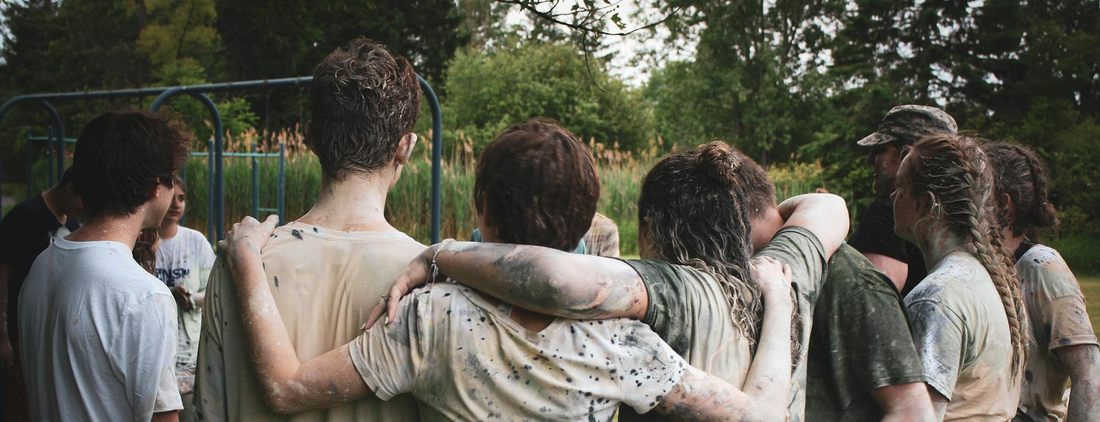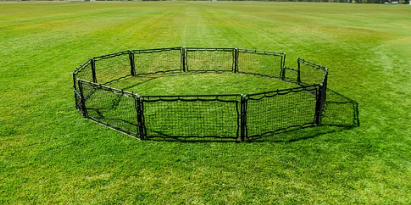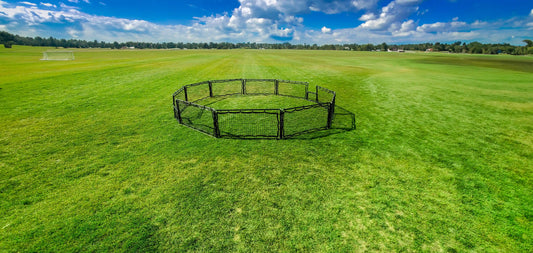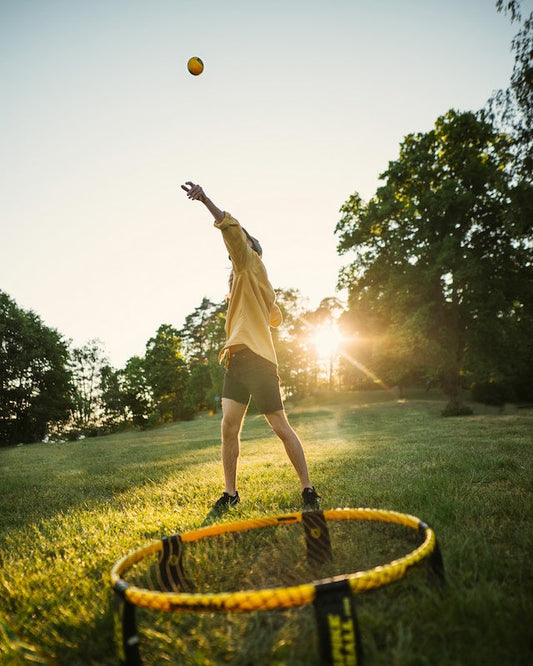Bringing a group of young people together can be both exciting and challenging, especially when it comes to building trust and teamwork. But when the right activities are in play, barriers fall, friendships form, and everyone walks away feeling more connected. Whether your goal is to boost team morale, improve communication, or simply have some fun, The 9 Best Team Building Games for Uniting Your Youth Group will do the trick. Get ready to see your group bond through team building activities in ways you never thought possible!
League Soccer
League soccer as a youth group game is an engaging and dynamic way to foster team building activity, physical fitness, and healthy competition among young people. The game is typically organized into a series of matches or a mini-tournament, with teams playing against each other over a period of time, just like in a professional soccer league. To set up league soccer for your youth group, you'll need a soccer ball, cones or markers for goals (if a full-sized goal isn't available), jerseys or pinnies to distinguish teams, a whistle for the referee, and optionally, a scoreboard to keep track of points. The group is divided into teams with an equal number of players, allowing for substitutes to provide rest and rotations. Matches are played on a marked field, which can be scaled to fit the space and the age of the participants. Each match starts with a kickoff, and the goal is to score by getting the ball into the opposing team's net, following standard soccer rules like no hands (except for the goalkeeper), offside, throw-ins, and corner kicks. Games typically last 10 to 20 minutes per half, depending on the players' age and stamina. Points are awarded for wins and draws, with a league table tracking progress throughout the series. The team with the highest points at the end of the league is crowned the winning team. League soccer encourages regular participation, which helps in building camaraderie and teamwork over time. It also teaches valuable life skills such as leadership skills, discipline, and the importance of working together towards a common goal. Plus, it’s a fantastic way for a old or young person to burn off energy and stay active in a structured and positive environment.
9 Square

9 Square is a fun game that combines volleyball and four square (two beloved games). This game is designed to encourage teamwork and bonding. Perfect for schools, camps, and churches, this game creates fun team building experiences that players will love. 9 Square is the perfect indoor and outdoor team building activities because it encourages healthy competition and team building without the bite of a one-on-one battle. Nine players can play in a single 9 Square court simultaneously, ensuring that plenty of people participate. As the game goes on, players are always coming in and out of the game. The game is simple and can be played with a bigger or a smaller team, as long as there are 9 players minimum. Participants stand in a three by three grid, and the middle square is the King or Queen square. The rest of the positions spiral out until the bottom corner is square nine, the starter square. If a player misses the ball, they have to move down to the last square, and all other players move up. The common goal is to reach the King or Queen square and then stay in that position. All players have the same chance to move up, meaning that everyone is on an even playing field. If someone hits the ball out of the grid or If they drop the ball, they're out. 9 Square is the perfect game for a tournament, as those who maintain their place as King or Queen move up and others move down. Because 9 Square is always changing, it will keep youth including high schoolers entertained for a full PE class. It's one of the best rainy day games. Its a Fast-Paced game that involves friendly competitions & improves team morale.
It is a fun game that is perfect for all ages – whether it’s elementary school kids, high school students, or adults, everyone can jump in and enjoy!
Fingertip Hula Hoop
Fingertip Hula Hoop is a fun and engaging team bonding game that emphasizes teamwork, coordination, and communication. The setup is simple: you need a large hula hoop (or multiple hula hoops depending on if you have a big or small group ) and enough space for each participant to stand in a circle. To start, have the group stand in a circle, with everyone extending their arms and pointing their index fingers forward. The hula hoop is then placed on top of the group's outstretched fingers. The objective is for the group to lower the hula hoop to the ground without anyone losing contact with it. Only the tips of their fingers can touch the hoop, and they must work together to keep the hoop level and balanced as they slowly bring it down. The challenge comes from the fact that if one person pushes too hard or too lightly, the hoop can easily become unbalanced or rise back up. The group must communicate effectively and coordinate a player to be a leader or spokesmen to guide the group to achieve the goal. If the hoop falls or someone loses contact, the group must start over from the beginning. This game is not only entertaining but also serves as a powerful exercise in patience, collaboration, and problem solving skills. It’s a great way to build unity and trust within a youth group while providing plenty of laughs, memorable moments and team bonding activities.
Relay Races
Relay races are a fantastic and energetic youth group game that promotes teamwork, team dynamics and friendly competition. The basic setup requires a starting line, a finish line, and any objects or markers needed for the specific relay race variation you choose. You can also add props like batons, cones, or small objects to be passed between team members. To begin, the group participants are divided into 2 equal teams. The teams line up behind the starting line, and the first player in each team is given a baton or a similar object. When the race begins, the first player runs to a designated point (which could be a turnaround point, an obstacle, or the finish line), performs a task if required (like touching a cone or picking up an object), and then races back to hand off the baton to the next player. The next player then repeats the process. The relay continues until all members of the team have completed the course. The first team to have all members finish is declared the winner. There are numerous variations of relay races you can introduce, such as sack races, three-legged races, egg-and-spoon races, or even water-carrying relays. These variations can be tailored to the group's size, age, and available space, making relay races a versatile and fun game for any youth group event to add to your list of fun team building activities.
Team Architect
Team Architect is a creative and engaging team-building game that challenges each small group to work together to build a structure using limited resources. This activity emphasizes collaboration, communication, and problem-solving, making it a perfect team-building game for youth groups. To play, participants are divided into small groups, with each team member taking on a specific role, such as designer, builder, or resource manager. The group is given a set of materials—these could be anything from popsicle sticks and tape to blocks or even recycled materials. The challenge is for the entire team to design and construct a structure within a set time limit, often with a specific goal in mind, such as height, stability, or creativity. Throughout the activity, team members must communicate effectively, share ideas, and work together to overcome any obstacles they encounter. This team-building game encourages participants to listen to one another, value each other’s input, and combine their individual strengths to achieve the goal. Often times one can discover a hidden talent as they work with others and contribute their ideas. Once time is up, each small group presents their structure, explaining their design process and the challenges they faced. This part of the game is also a valuable opportunity for reflection and discussion, as participants can share what they learned about the team building exercise and how they can apply these lessons to other areas of their lives. Team Architect is a fun and impactful way to strengthen bonds and develop essential teamwork skills in a youth group setting.
Tug of War
Tug of War is a classic youth group game that’s perfect for fostering team spirit and encouraging friendly competition. In this game, participants are divided into small teams, each aiming to outpull the other. It’s a simple yet highly effective way to build camaraderie and have a blast in the process. To play Tug of War, divide participants into smaller groups, making sure the teams are balanced in strength and numbers. Each team grabs one end of a sturdy rope, with a marker placed at the center of the rope to signify the middle. The objective is to pull the opposing team across a designated line or marker on the ground. As the teams dig in and pull with all their might, they’ll naturally develop a fun team spirit, cheering each other on and strategizing together. Tug of War is more than just a test of physical strength—it’s about communication, coordination, and team bonding. Whether played indoors or outside, this game remains a favorite in youth group games, bringing everyone together for a shared challenge and a lot of laughter.

The Tangled Chain
The Tangled Chain is a classic game that's perfect for helping youth ministry leaders create a welcoming environment where students can bond and grow in fellowship, this game is aimed toward large groups and creates ideal team-building exercises for youth groups. It’s a fun way to break the ice and encourage communication and cooperation among participants. To play, the group size can range from a smaller group of about 10 to a large group of 30 or more. Everyone stands in a circle, shoulder to shoulder, and then each person reaches out with both hands to grab the hands of two different people across the circle. The result is a human "knot" or tangled chain. The challenge is for the group to untangle themselves without letting go of each other’s hands. players must communicate, carefully maneuver, and sometimes twist and turn to work their way out of the tangle. The goal is to return to a single, untangled circle. The Tangled Chain is a fantastic team building exercise because it requires participants to work closely together, think strategically, be patient with each other and improve team dynamics It’s a classic game that not only brings a lot of laughs but also strengthens the bonds within a youth group.
Psychiatrist
Psychiatrist is a fun activity that doubles as a team-building game, perfect for youth groups looking to engage in creative thinking, problem solving skills and strengthen their connections. This game challenges participants to think on their feet and work together to solve a playful mystery. In Psychiatrist, one person volunteers to be the "psychiatrist" and temporarily leaves the room while the rest of the group comes up with a "condition" that everyone in the group will pretend to have. The condition can be anything from everyone answering questions as if they’re the person to their left, to everyone pretending they think they’re a specific animal or famous character. The possibilities are endless and often lead to hilarious results. When the psychiatrist returns, their goal is to figure out what the condition is by asking yes or no questions to the group. The group, meanwhile, must answer according to the condition they agreed upon. The psychiatrist continues asking questions until they correctly identify the condition. Psychiatrist is a great team-building activity because it encourages creative thinking and group cohesion. It’s a game that allows kids to have fun while also practicing their communication and problem-solving skills in a relaxed and engaging environment.
Talent Show

A talent show is a fantastic youth group game that shines a spotlight on the hidden talent of each participant, making it an engaging and entertaining experience for everyone involved. Whether your group consists of younger kids or older participants, this game is adaptable to various ages, skill and settings, including a remote show. In a talent show, each participant, or team, gets the chance to showcase their unique skills or hidden talents. From singing and dancing to magic tricks and comedic performances, the possibilities are endless. For younger kids, the talent show can be a simple and fun way to build confidence and encourage creativity. To do this remotely the show can be adapted to virtual platforms, allowing participants to perform from their own homes. The Talent Show not only highlights individual skills but also fosters team spirit and camaraderie. As participants cheer for their peers and celebrate each other's talents they create their own remote team. it strengthens group bonds and creates a supportive environment. This game encourages everyone to step out of their comfort zones, offering a memorable and uplifting experience that brings the whole group closer together.
As you gear up to enhance your youth group's dynamics, integrating these team building games can lead to impactful results. Each team building game offers a unique opportunity to develop problem-solving skills, uncover hidden talents, and foster a stronger sense of unity among participants. Just as teams in the World Cup showcase their strengths and strategies, your group can excel by tackling these activities with enthusiasm and collaboration. Whether it's managing misaligned teams or overcoming challenges together, these exercises are designed to create memorable experiences and strengthen bonds. Embrace the fun and watch your group grow together, building skills and friendships that extend beyond the game.







